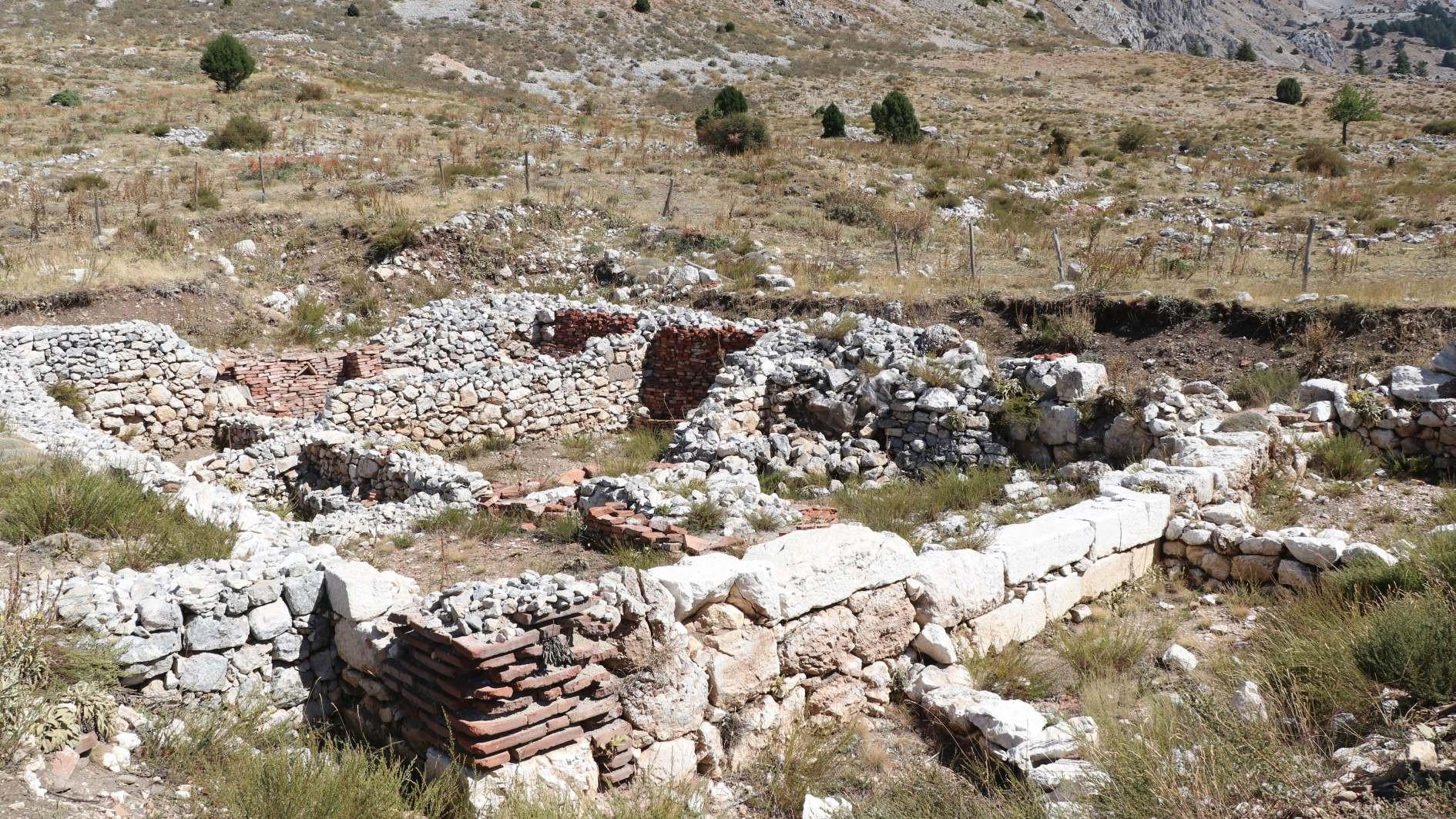
Excavations in the ancient city of Sagalassos in southwestern Türkiye have unearthed traces of a large communal structure believed to have been used by various Roman-era associations for gatherings, meals, weddings and other events nearly 1,800 years ago.
Located in the Ağlasun district of Burdur and listed on UNESCO’s Tentative World Heritage List, Sagalassos was one of the key cities in the ancient region of Pisidia. Archaeological teams conducting geophysical surveys over an 8-hectare area in what is referred to as the “potters’ quarter” identified nearly 80 workshops operating in antiquity.
Adjacent to these workshops, archaeologists discovered partial remains of a significant building, interpreted as being allocated to professional and religious associations, such as potters, textile workers and coppersmiths, suggesting a rich social and economic life in the city.
Excavations in the so-called "association building," dated to the third century A.D., revealed food remnants and items typical of the era. These findings support the idea that this building hosted communal events like banquets and celebrations. Among the discoveries were hairpins believed to belong to female attendees, indicating the presence of women at these gatherings.
Researchers believe that commercial agreements may also have been made in the building, which stood at the center of a vibrant artisan community. Evidence from the workshops suggests family-run businesses, particularly among potters.
A unique example in the Roman world
Professor Jeroen Poblome from KU Leuven’s Department of Archaeology highlighted the uniqueness of the discovery. "We found an inscription in Sagalassos mentioning a textile association. While the textile industry existed, pottery was far more dominant here. We're aware of potters' guilds, and we will continue excavating until we find further inscriptions confirming this," he said.
Explaining the context of the discovery, Poblome added, "Behind the city’s ancient theater lies a large potters' quarter where we began our investigation. What we uncovered was not a workshop — there were no kilns — but a large building with refuse piles nearby. These refuse heaps told us what people ate, nothing luxurious, more like cow hooves and pig ears."
"When we excavated the building itself, it became clear that a guild had hosted a major event there. They left everything behind — food scraps, thousands of ceramic fragments. We're now carefully piecing them together. As far as I know, this is a unique case in the Roman world," he emphasized.
Poblome noted that the presence of hairpins indicates that women attended these gatherings: "From what we found, we understand that entire families were involved in these crafts. When there was a party, everyone came. It was like a wedding hall — heavily used, as shown by the many refuse heaps we uncovered. Being together has always been important, and this is a typical example of that from the Ancient World," he concluded.